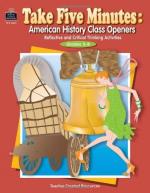|
This section contains 921 words (approx. 4 pages at 300 words per page) |

|
Anti-Masons.
The Anti-Masonic Party was an expression of the burgeoning democracy and political involvement of early-nineteenth-century America. The party sprung out of a bizarre series of local events in upstate Batavia, New York. In 1826 bricklayer William Morgan, a former member of the Freemasons, wrote an expose of the organization and revealed its secret rituals. The Freemasons, or Masons, were originally a fraternal order of freethinkers skeptical of religion but by the mid 1820s had evolved into a secret social organization that many suspected of trying to monopolize political offices at the people's expense. Morgan disappeared after writing his book, and rumors spread that the Masons had kidnapped, tortured, and killed him, dumping his body into the Niagara River. Eventually a body, supposedly mutilated according to Masonic ritual, was found. No one was ever arrested or charged, which led to accusations that police officials and...
|
This section contains 921 words (approx. 4 pages at 300 words per page) |

|




